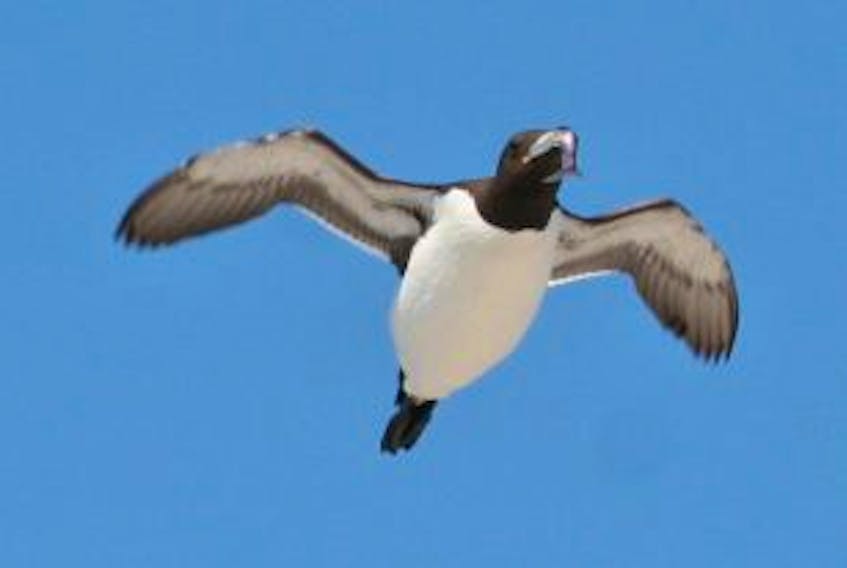ST. JOHN'S, N.L. — In Newfoundland, the common murre — or turr, as we call it — is a traditional food source, but one research scientist says they offer more than food.
“We talk about them as being indicators, and they really are very much like canaries in the coal mine,” John Piatt told The Telegram.
Piatt studied seabirds in Newfoundland while getting his doctorate in marine biology at Memorial University in the 1980s, but since 1987 he’s worked as a research wildlife biologist at the Alaska Science Centre in Anchorage, Alaska.
Newfoundland may be on the opposite coast, but Piatt believes there’s a lot we can learn in this province about what happened in Alaska in 2015 and 2016.

From California to Alaska, there’s populations of murres just like we have on this coast from Nova Scotia up to Greenland.
The Pacific coast murres are the focus of Piatt’s research – namely, what caused roughly 60,000 dead murres to wash ashore. About a million of the birds died, he said.
“Most of them had nothing in their stomachs at all, and they were very skinny.”
The murres starved to death.
“What does it mean when a million murres die over such a large area? It means something’s really screwed up.”
It’s particularly disconcerting for Piatt given the murre is “an incredibly successful seabird.”
These birds know how to hunt fish. They can dive to 600 feet. They can fly across the Grand Banks in a few hours to feed off the continental shelf. They can migrate over large areas to find food.
“When a lot of birds die from starvation, the real question is, what happened to all that food?”
Piatt said what triggered the starvation was a marine heatwave. It started around 2013 and warmed up an area of ocean equal to the size of the continental United States. Water to depths of up to 200 metres were up to six degrees Celcius warmer than normal.
“When you turn the temperature up that much, it makes a huge impact on the animals that live in that water.
“Basically, that had a major influence on the availability of food over a large area at the same time, and murres are incredible animals; when they looked here, and they looked there, and there was no food — within a few days they just died en masse.
“And that’s what we might expect when things get warm.”
Piatt said Newfoundland experienced a similar event in 2012 that caused the gannets at Cape St. Mary’s to abandon their chicks on the coast in order to go farther offshore to access food.
He says we can learn from what happened in Alaska, and that’s why he’s giving a talk at The Lantern (35 Barnes Rd.) on August 15 from 7 to 9 p.m.
“We need to know what’s coming.
“The waters have been warming in Newfoundland since the 1970s and 1980s, there’s been some considerable warming, but nothing too extreme — except in 2012.
“I think that was a taste of what we could see as water temperatures continue to increase.”
Piatt says these warm-water events are increasing in frequency and intensity and it’s only a matter of time before Newfoundland experiences an even stronger marine heatwave than we had in 2012.
While he admits Alaska and Newfoundland are different places with different ecology and oceanography, he says there’s still a lesson in the Pacific coast experience here on the Atlantic coast.
“Warm water is warm water — it has a profound effect on the marine communities – and you’re going to see it first in the birds.”
Twitter: @juanitamercer_









